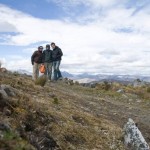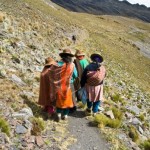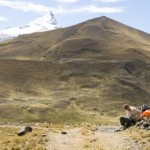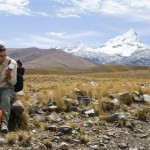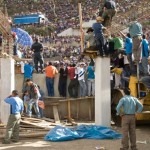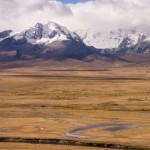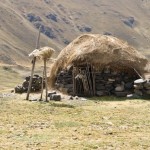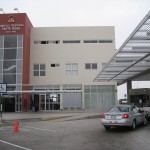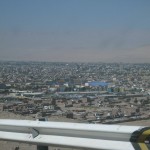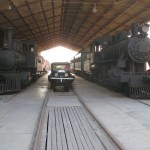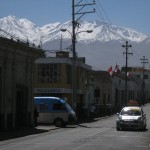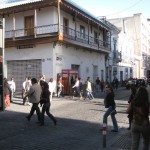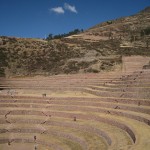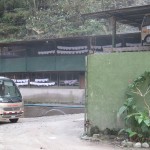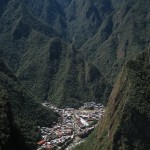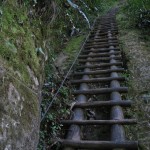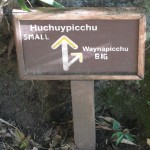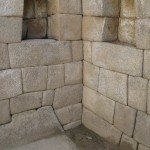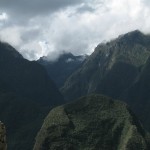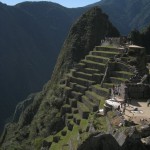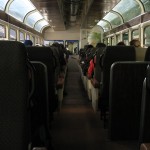today’s drive from puno to arequipa started off a bit rough…with me having to crank the engine for about a minute before it started. arequipa’s a little lower and a little warmer, so hopefully it will get easier. however, the mountain pass between the two cities reached an elevation of almost 3 miles, it’s incredible that the car can still run smoothly at such a high altitude (fyi — mount everest is about 5 miles).
arequipa center is a nice little colonial city, with a few interesting touches. for instance, rather than beeping (for the blind), the crosswalk plays a little song when it’s ok to cross. however, the song is always the same…which is probably a good thing for the blind people, but could be annoying for nearby employees. i also saw an owner hand-washing the individual leaves of the plant outside his restaurant. later, i visited the monasterio de santa catalina. lonely planet states it’s a ‘paradise for photographers’, so rather than post my shitty pictures, you’ll be better off searching the web (…i also forgot my camera in the car). the monastery is still functioning and is very big (it has little streets) and serene inside…it’s like another world.
ON GPS
when people here learn about my trip, they’ll typically be surprised by two things: one, that i’m driving alone; and two, that i don’t have a gps (which is often called ‘gps’, even in spanish…rather than ‘spg’ like the acronym should be). my answer to the first is that i’ve met friends along the way, either who live in latin america or who flew down for a leg…but that while most people are excited by the trip, they can’t commit because of real or imaginary obligations (real: family or mortgage, fake: scared to leave their job). the navigation question, however, is more interesting.
it was my original intention to buy good maps every time i entered a country. i assumed that i could get a good aaa-equivalent map at the gas stations, etc. probably not surprising to you, getting good maps is much harder than in the us. luckily, since i don’t have a real destination…having a map is not as important (…i mostly head south). lonely planet usually provides a good enough map that will get me around, although i’m sure i’m missing good places (for instance, my lonely planet isn’t big on camping…so i’ve mostly stayed in hostels and hotels). in addition, i borrowed santi’s gps unit in san jose, costa rica & i bought some detailed maps in panama city. having the gps made it much easier to navigate the busy city, as i was able to visit multiple shipping agents in just a few hours.
even the best maps of latin america, though, are just guides. in the united states, the streets and buildings are almost always clearly marked. with a map and some patience, you can usually get anywhere you need to. many latin american cities (and all towns) lack street signs and numbers. in panama city, for instance, street names on the map were different than those on the streets…and locals often times knew neither. in san jose (costa rica), houses don’t even have addresses (well, not in the traditional sense…instead they’ll write down that they live ’50m north of the coca-cola distribution plant’).
so how can you get around a place without a codified grid? sometimes i’ll follow cars….hoping they’ll lead me to the tourist destination (sometimes this backfires and i end up in a tiny suburb/village). highways will sometimes have mileage markers….with the zero typically being at a big city (although sometimes the distances will go up, then back down again). other times (esp in central america), you can spot the center of town by the big cathedral (thank god for the catholic missionaries!). but usually, i’ll ask people (in fact, i typically will ask a few people and follow the most common response). it’s also incredibly important to understand your audience….a taxi driver will usually know the area better than a supermarket clerk (who today gave me the exact opposite, and wrong, response as the cab drive outside).
but, back to gps, it seems like it can have a huge impact in 2nd and 3rd world nations. well, probably not with the current user-interface…and maybe even with different technologies (bottom-up vs. top-down). but, some sort of virtual navigation system has the ability to leap-frog the burdensome signage system present in the us…in much the same way that cell phones have leap-frogged landlines. one of the most important elements, though, is access — both access to update the information and access to the information itself. whereas signs can be costly to install/maintain….their access is free and ubiquitous. virtual navigation systems will likely need a similarly low-cost, universal approach.
but for now, i’ll just keep taking the ‘scenic route’….on purpose, i swear.

